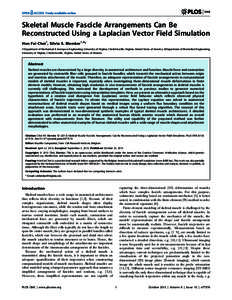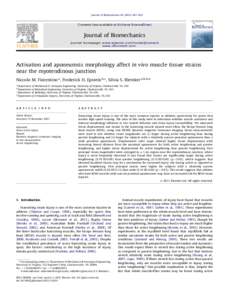<--- Back to Details
| First Page | Document Content | |
|---|---|---|
 Date: 2008-02-21 16:24:26Skull Medial pterygoid muscle Zygomasseteric system Zygomatic arch Temporal muscle Aponeurosis Table of muscles of the human body: Head Ramus of the mandible Human anatomy Anatomy Masseter muscle |
 | THE PLANTAR FASCIA: WHAT IT IS AND WHAT IT DOES -by John Falkner-Heylings BSc(PodMed), FPSPract, Podiatrist The plantar fascia is a sheet-like ‘aponeurosis’ of pearly-white connective tissue situated deep to the skinDocID: 1kcox - View Document |
 | doi:j.jbiomechDocID: 1a72H - View Document |
 | Skeletal Muscle Fascicle Arrangements Can Be Reconstructed Using a Laplacian Vector Field Simulation Hon Fai Choi1, Silvia S. Blemker1,2* 1 Department of Mechanical & Aerospace Engineering, University of Virginia, CharloDocID: 19WpK - View Document |
 | ARTICLE IN PRESS Journal of Biomechanics–1391 ASB 2004 Pre-Doctoral Young Scientist AwardDocID: 19Qn3 - View Document |
 | Activation and aponeurosis morphology affect in vivo muscle tissue strains near the myotendinous junctionDocID: 19DEb - View Document |
